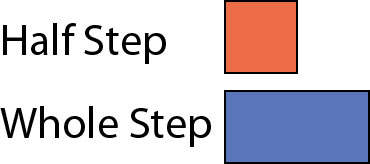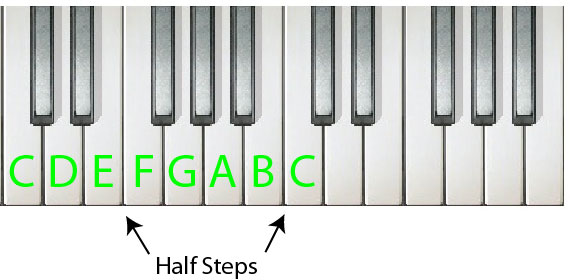Scales
Scales
This tutorial will explain the concept of scales and how they are constructed.
Particularly, we will learn about the Major Scale.
A scale is a series of closely spaced notes in ascending or descending order.
“Scale” literally means “Staircase”.

Unlike a ruler, where each unit is exactly the same size, the units that make up the Major Scale come in two different sizes.

The smaller unit, called a Half Step, is the distance from one note to the nearest note next to it. A Half Step is also known as a Semitone or a Minor 2nd.
The larger unit, called a Whole Step, or Major 2nd, is equal to two half steps.

The major scale is made of an unequal pattern of whole steps and half steps in this order:

Whole, Whole, Half, Whole, Whole, Whole, Half.
That is, 2 whole steps, 1 half step, 3 whole steps, 1 half step.

On the piano, it is easy to see that the half steps are between EF and BC because there is no black key in between.

A more general rule that works for all keys is that the half steps are between degrees 3-4 and 7-8.

Now you have a basic understanding of the construction of the Major Scale.